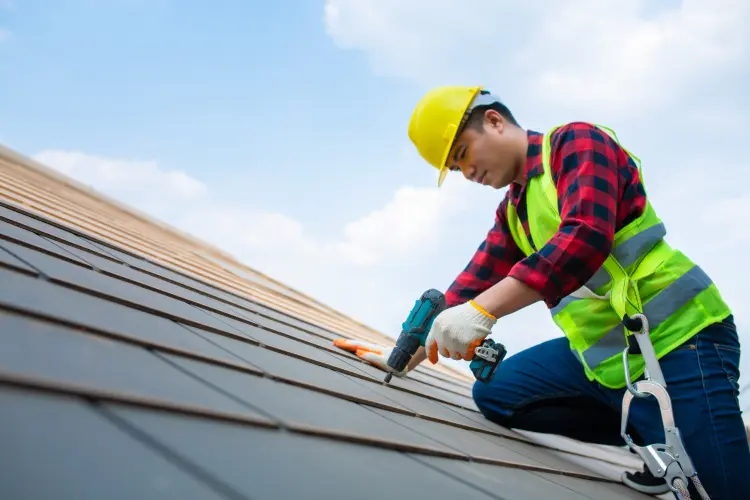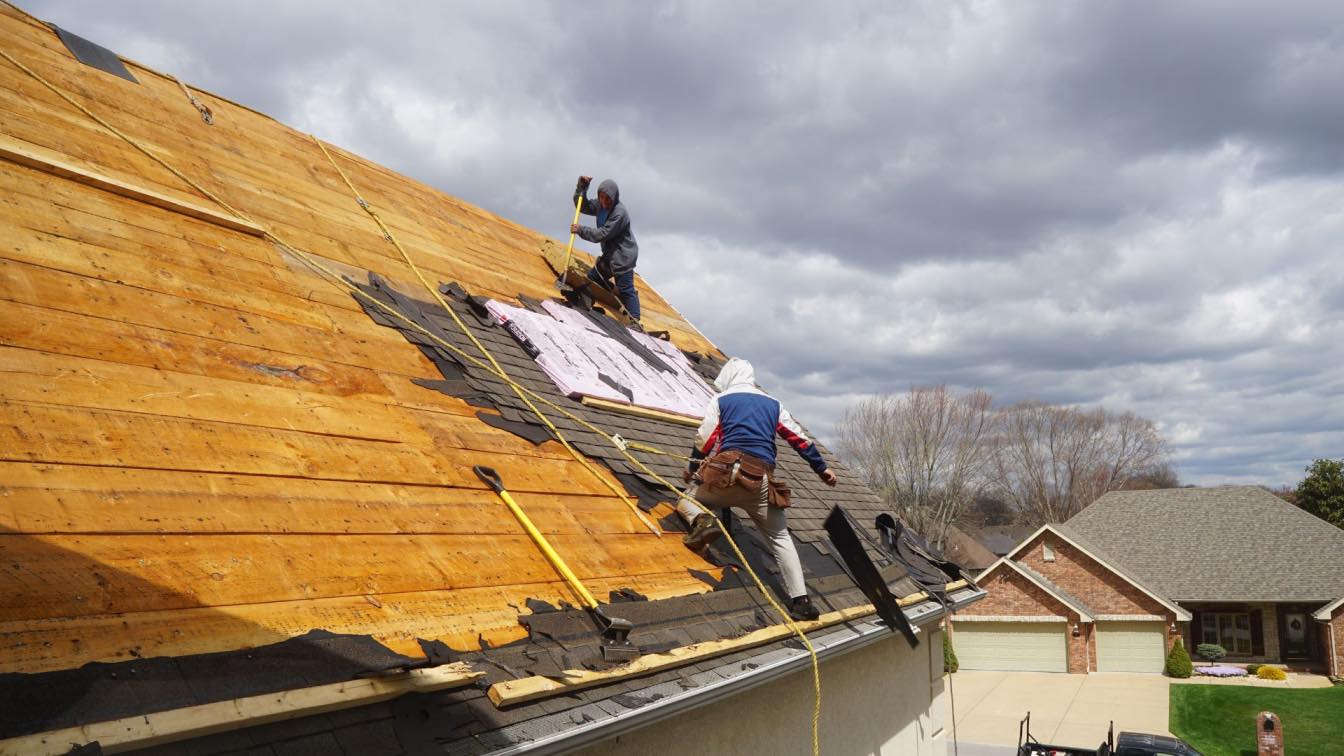Recognizing the Perks of Roof Flat Roofing System Setup Techniques
The exploration of flat roofing installment methods presents an engaging instance for their adoption in both domestic and commercial applications. Especially, these roofs supply significant cost-effectiveness and power performance benefits, alongside flexible design options that can boost home aesthetic appeals. Additionally, their low maintenance requirements and possible for ecological advantages add to their allure. Comprehending the full range of these advantages entails examining numerous factors that affect their lasting performance and sustainability. What are the critical factors to consider in picking the best level roof for certain requirements?
Cost-Effectiveness of Flat Roofs

Additionally, the convenience of installment related to flat roofs can cause reduced labor costs. Since they call for much less framing and structural assistance, contractors can finish installments quicker and efficiently. This performance can likewise convert right into minimized time on-site, additional lowering total costs.
Upkeep expenses can also contribute in the cost-effectiveness of level roofing systems. While they may require routine maintenances, their ease of access permits much easier maintenance, possibly resulting in reduced lasting solution costs. It is essential to take into consideration the durability and toughness of the roof materials utilized, as these variables can influence general cost-effectiveness over the roof's lifespan. Inevitably, flat roofings can be a financially practical alternative, particularly for commercial and commercial applications.
Energy Performance Benefits
Flat roof coverings not only provide expense benefits yet also add considerably to power effectiveness. Among the key advantages of level roofing systems is their capability to suit innovative insulation strategies. The insulation can be installed straight above the structural deck, lessening thermal lowering and linking heat loss during colder months. This leads to reduce energy usage for heating & cooling, eventually leading to minimized utility bills.
Additionally, flat roofing systems can sustain reflective materials or coatings that enhance energy efficiency. These products show sunlight, decreasing warm absorption and keeping cooler interior temperatures during heat. This not just boosts owner convenience however also lessens the dependence on a/c systems, thereby additional reducing energy prices.
Furthermore, the design of level roofings enables the possible setup of eco-friendly roofs or photovoltaic panels. Environment-friendly roof coverings can supply additional insulation and lower the metropolitan heat island result, while solar panels can harness renewable resource, adding to a sustainable power cycle. Overall, the energy performance benefits of level roofing systems make them an increasingly prominent choice in both property and commercial applications, aligning with modern power conservation objectives.
Design Adaptability

Additionally, the flat roofing system style assists in the unification of photovoltaic panels and environment-friendly roof, promoting sustainability while maintaining a sleek account. This flexibility reaches the selection of products, as level roof coverings can be created making use of a selection of materials, consisting of rubber, PVC, and bitumen, each offering distinctive advantages in terms of sturdiness and visual appeal.
Additionally, the absence of sloped surfaces permits easier construction and can significantly lower the total building elevation, which might be vital in urban environments - Cuyahoga Falls Roof Repairs. The layout versatility intrinsic in flat roofing systems not only improves aesthetic allure but also accommodates the practical needs of occupants, making them an increasingly preferred option in modern design. This flexibility click now placements level roof as a compelling alternative in design-forward jobs
Low Upkeep Demands
While many roof call for routine maintenance and extensive maintenance, level roofs are made to minimize these demands, providing a practical option for home owners. One of one of the most considerable advantages of level roofing systems is their reduced maintenance needs, which can result in lasting cost savings and much less inconvenience for home owners and industrial building managers alike.
Level roofs usually include resilient materials such as EPDM, TPO, or customized bitumen, which are engineered to withstand numerous climate conditions with marginal wear. Their design enables simple access, making it possible for straightforward assessments and upkeep tasks. Homeowner can perform regular checks to determine prospective concerns, such as pooling water or debris accumulation, without the complexities usually related to sloped roofings.
Additionally, flat roofing systems are much less vulnerable to particular kinds of damage, such as tile loss or leakages brought on by the sliding of snow and ice. This durability additionally adds to great site lowered maintenance requirements. Ultimately, the low upkeep requirements of flat roofing systems not only enhance their charm however likewise supply homeowner with peace of mind, recognizing their roofing system is reputable and effective throughout its life expectancy.
Environmental Impact Considerations
When considering a roofing service, the environmental effect of flat roofing systems emerges as an important element for many homeowner. Flat roofs can offer numerous benefits in terms of sustainability, particularly when utilizing green products and innovations. Lots of flat roof covering systems utilize materials that are recyclable or made from recycled material, which assists reduce the total carbon footprint.
In addition, level go now roofing systems can be designed to accommodate eco-friendly roofing systems, including greenery that boosts air high quality while offering insulation and stormwater monitoring. This not only boosts the structure's energy performance but additionally alleviates the metropolitan warmth island impact, which is increasingly crucial in densely booming areas.
Furthermore, flat roofings typically promote the setup of photovoltaic panels, enabling residential or commercial property proprietors to harness renewable resource. This assimilation not only minimizes reliance on fossil fuels but likewise contributes to decrease energy expenses with time.
However, it is important to think about the product choices and installation approaches to ensure that the environmental advantages are made the most of. By deciding for sustainable practices, flat roofing system installments can play a considerable function in advertising environmentally friendly building layouts, ultimately adding to a much healthier planet.
Conclusion

The materials required for flat roofings, such as EPDM, TPO, or modified asphalt, usually come at a decreased price compared to the intricate materials utilized for sloped roof coverings, such as ceramic tiles or tiles.
In enhancement, the style of flat roofing systems permits for the prospective setup of eco-friendly roof coverings or solar panels. Generally, the energy performance advantages of level roofings make them a significantly prominent choice in both residential and business applications, straightening with contemporary energy conservation goals.
Ultimately, the low upkeep needs of flat roofs not only enhance their appeal but additionally supply residential property proprietors with tranquility of mind, understanding their roof system is trusted and efficient throughout its life-span.
The reduced maintenance demands and positive environmental influence, particularly via the integration of solar panels and environment-friendly roof coverings, establish level roof coverings as a sustainable selection.